-
 Bitcoin
Bitcoin $106,754.6083
1.33% -
 Ethereum
Ethereum $2,625.8249
3.80% -
 Tether USDt
Tether USDt $1.0001
-0.03% -
 XRP
XRP $2.1891
1.67% -
 BNB
BNB $654.5220
0.66% -
 Solana
Solana $156.9428
7.28% -
 USDC
USDC $0.9998
0.00% -
 Dogecoin
Dogecoin $0.1780
1.14% -
 TRON
TRON $0.2706
-0.16% -
 Cardano
Cardano $0.6470
2.77% -
 Hyperliquid
Hyperliquid $44.6467
10.24% -
 Sui
Sui $3.1128
3.86% -
 Bitcoin Cash
Bitcoin Cash $455.7646
3.00% -
 Chainlink
Chainlink $13.6858
4.08% -
 UNUS SED LEO
UNUS SED LEO $9.2682
0.21% -
 Avalanche
Avalanche $19.7433
3.79% -
 Stellar
Stellar $0.2616
1.64% -
 Toncoin
Toncoin $3.0222
2.19% -
 Shiba Inu
Shiba Inu $0.0...01220
1.49% -
 Hedera
Hedera $0.1580
2.75% -
 Litecoin
Litecoin $87.4964
2.29% -
 Polkadot
Polkadot $3.8958
3.05% -
 Ethena USDe
Ethena USDe $1.0000
-0.04% -
 Monero
Monero $317.2263
0.26% -
 Bitget Token
Bitget Token $4.5985
1.68% -
 Dai
Dai $0.9999
0.00% -
 Pepe
Pepe $0.0...01140
2.44% -
 Uniswap
Uniswap $7.6065
5.29% -
 Pi
Pi $0.6042
-2.00% -
 Aave
Aave $289.6343
6.02%
The stock price breaks through the previous high but falls back quickly? Is it a real breakthrough or a false breakthrough to lure more?
A real breakthrough in crypto trading shows sustained price movement above previous highs with increased volume, while a false one quickly reverses with low volume.
Jun 10, 2025 at 05:50 am

In the world of cryptocurrency trading, understanding the nuances of price movements is crucial for making informed decisions. One common scenario traders encounter is when a stock or cryptocurrency price breaks through a previous high but then quickly falls back. This situation raises the question: Is it a real breakthrough or a false breakthrough designed to lure in more traders? Let's dive into this topic to gain a deeper understanding.
Understanding Breakthroughs in Cryptocurrency Trading
A breakthrough in the context of cryptocurrency trading refers to a price movement that surpasses a significant resistance level, such as a previous high. This can signal a potential trend continuation or reversal, depending on the broader market context. When a price breaks through a previous high, it often attracts attention from traders who see it as a sign of strength and potential for further gains.
What Constitutes a Real Breakthrough?
A real breakthrough is characterized by sustained price movement above the previous high, accompanied by increased trading volume and positive market sentiment. Several factors can indicate a real breakthrough:
- Sustained Price Movement: The price should remain above the previous high for a significant period, typically more than just a few minutes or hours.
- Increased Trading Volume: Higher trading volume during the breakthrough suggests strong market participation and conviction in the new price level.
- Positive Market Sentiment: Positive news, developments, or technical indicators that support the price movement can reinforce the validity of the breakthrough.
Identifying a False Breakthrough
On the other hand, a false breakthrough, often referred to as a "fakeout" or "head fake," is a temporary price movement above a previous high that quickly reverses. False breakthroughs are designed to lure traders into buying at what appears to be a breakout, only for the price to fall back below the previous high. Key indicators of a false breakthrough include:
- Quick Reversal: The price quickly falls back below the previous high, often within a short period after the initial breakthrough.
- Low Trading Volume: Lack of significant volume during the breakthrough suggests weak market participation and a lack of conviction in the new price level.
- Negative or Neutral Market Sentiment: Absence of positive news or developments that could support the price movement, or the presence of negative sentiment that contradicts the breakthrough.
Analyzing the Immediate Aftermath of a Breakthrough
To determine whether a breakthrough is real or false, traders need to closely analyze the immediate aftermath of the price movement. Here are some steps to follow:
- Monitor Price Action: Watch how the price behaves after the breakthrough. If it remains above the previous high and continues to trend upwards, it could be a real breakthrough.
- Check Trading Volume: Compare the volume during the breakthrough with the average volume. A significant increase in volume supports a real breakthrough, while low volume suggests a false one.
- Evaluate Market Sentiment: Look for news, developments, or technical indicators that could influence the price. Positive sentiment can validate a real breakthrough, while negative sentiment may indicate a false one.
Using Technical Indicators to Confirm Breakthroughs
Technical indicators can provide additional insights into whether a breakthrough is real or false. Some commonly used indicators include:
- Moving Averages: If the price remains above a moving average after breaking through a previous high, it can indicate a real breakthrough. Conversely, if the price quickly falls below the moving average, it may suggest a false breakthrough.
- Relative Strength Index (RSI): An RSI that remains in overbought territory (above 70) after a breakthrough can indicate strong bullish momentum, supporting a real breakthrough. If the RSI quickly falls back into neutral territory (between 30 and 70), it may suggest a false breakthrough.
- Bollinger Bands: A price that breaks through the upper Bollinger Band and remains above it can indicate a real breakthrough. If the price quickly falls back within the bands, it may suggest a false breakthrough.
Case Studies: Real vs. False Breakthroughs in Cryptocurrency
To better understand the difference between real and false breakthroughs, let's examine a couple of case studies from the cryptocurrency market.
Case Study 1: Bitcoin (BTC) Breakthrough
In early 2021, Bitcoin experienced a significant breakthrough when its price surpassed the previous high of $40,000. The price not only broke through but continued to rise, eventually reaching over $60,000. This breakthrough was accompanied by:
- Sustained Price Movement: The price remained above $40,000 for several weeks.
- Increased Trading Volume: Trading volume surged during and after the breakthrough, indicating strong market participation.
- Positive Market Sentiment: Positive news, such as institutional adoption and favorable regulatory developments, supported the bullish trend.
This example illustrates a real breakthrough, as the price movement was sustained and supported by strong market fundamentals.
Case Study 2: Ethereum (ETH) False Breakthrough
In late 2020, Ethereum experienced a false breakthrough when its price briefly surpassed the previous high of $600 but quickly fell back below this level. Key indicators of this false breakthrough included:
- Quick Reversal: The price fell back below $600 within a few hours of the initial breakthrough.
- Low Trading Volume: The volume during the breakthrough was not significantly higher than average, suggesting weak market participation.
- Neutral Market Sentiment: There were no major positive developments or news that could support the price movement.
This example demonstrates a false breakthrough, as the price movement was not sustained and lacked strong market support.
Strategies for Trading Breakthroughs
Given the potential for both real and false breakthroughs, traders need to employ strategies that can help them navigate these situations effectively. Here are some strategies to consider:
- Wait for Confirmation: Instead of immediately entering a trade after a breakthrough, wait for confirmation that the price will remain above the previous high. This can be achieved by setting a time frame for confirmation, such as a few hours or a day.
- Use Stop-Loss Orders: To protect against false breakthroughs, set stop-loss orders just below the previous high. This can help limit potential losses if the price quickly reverses.
- Combine Technical and Fundamental Analysis: Use both technical indicators and fundamental analysis to assess the validity of a breakthrough. Positive news or developments can reinforce a real breakthrough, while technical indicators can provide early warnings of a false one.
Frequently Asked Questions
Q: How can I differentiate between a real and false breakthrough in real-time trading?
A: Differentiating between real and false breakthroughs in real-time trading requires a combination of monitoring price action, checking trading volume, and evaluating market sentiment. Use technical indicators like moving averages and RSI to confirm the breakthrough, and wait for a sustained price movement above the previous high before entering a trade.
Q: What are some common mistakes traders make when dealing with breakthroughs?
A: Common mistakes include entering trades too quickly without waiting for confirmation, ignoring trading volume, and not considering broader market sentiment. Traders often get lured into false breakthroughs due to FOMO (Fear of Missing Out) and fail to set proper stop-loss orders to protect against quick reversals.
Q: Can false breakthroughs be used as trading opportunities?
A: Yes, false breakthroughs can be used as trading opportunities, particularly for short-selling. Traders can identify false breakthroughs by watching for quick reversals and low trading volume. Once a false breakthrough is confirmed, traders can enter short positions to capitalize on the expected price decline.
Q: How important is trading volume in confirming a breakthrough?
A: Trading volume is crucial in confirming a breakthrough. A significant increase in volume during and after a breakthrough suggests strong market participation and conviction in the new price level, supporting a real breakthrough. Conversely, low volume during a breakthrough indicates weak market participation and a higher likelihood of a false breakthrough.
Disclaimer:info@kdj.com
The information provided is not trading advice. kdj.com does not assume any responsibility for any investments made based on the information provided in this article. Cryptocurrencies are highly volatile and it is highly recommended that you invest with caution after thorough research!
If you believe that the content used on this website infringes your copyright, please contact us immediately (info@kdj.com) and we will delete it promptly.
- 2025-W Uncirculated American Gold Eagle and Dr. Vera Rubin Quarter Mark New Products
- 2025-06-13 06:25:13
- Ruvi AI (RVU) Leverages Blockchain and Artificial Intelligence to Disrupt Marketing, Entertainment, and Finance
- 2025-06-13 07:05:12
- H100 Group AB Raises 101 Million SEK (Approximately $10.6 Million) to Bolster Bitcoin Reserves
- 2025-06-13 06:25:13
- Galaxy Digital CEO Mike Novogratz Says Bitcoin Will Replace Gold and Go to $1,000,000
- 2025-06-13 06:45:13
- Trust Wallet Token (TWT) Price Drops 5.7% as RWA Integration Plans Ignite Excitement
- 2025-06-13 06:45:13
- Ethereum (ETH) Is in the Second Phase of a Three-Stage Market Cycle
- 2025-06-13 07:25:13
Related knowledge

How to set the stop profit point after the high-level propeller pattern?
Jun 16,2025 at 08:04pm
Understanding the High-Level Propeller PatternThe high-level propeller pattern is a technical analysis formation often observed in cryptocurrency trading charts. It typically appears at significant price peaks and signals potential reversals. The pattern consists of a large candlestick with long upper and lower shadows, resembling a propeller, indicatin...
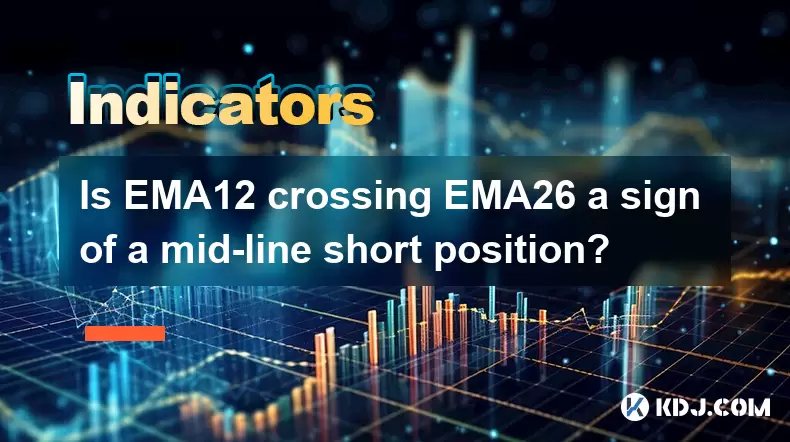
Is EMA12 crossing EMA26 a sign of a mid-line short position?
Jun 16,2025 at 07:22pm
Understanding EMA12 and EMA26 in Cryptocurrency TradingIn the world of cryptocurrency trading, Exponential Moving Averages (EMAs) are widely used tools for analyzing price trends. Specifically, the EMA12 and EMA26 are two of the most commonly referenced EMAs among traders. The EMA12 represents a short-term moving average calculated over the past 12 time...
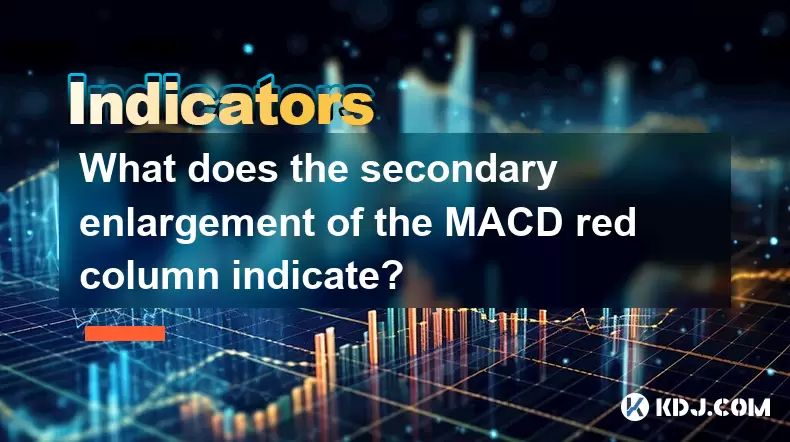
What does the secondary enlargement of the MACD red column indicate?
Jun 16,2025 at 07:49pm
Understanding the MACD Indicator and Its ComponentsThe Moving Average Convergence Divergence (MACD) is a widely used technical analysis tool in cryptocurrency trading. It consists of three main components: the MACD line, the signal line, and the MACD histogram. The histogram, represented as red or green bars, reflects the difference between the MACD lin...
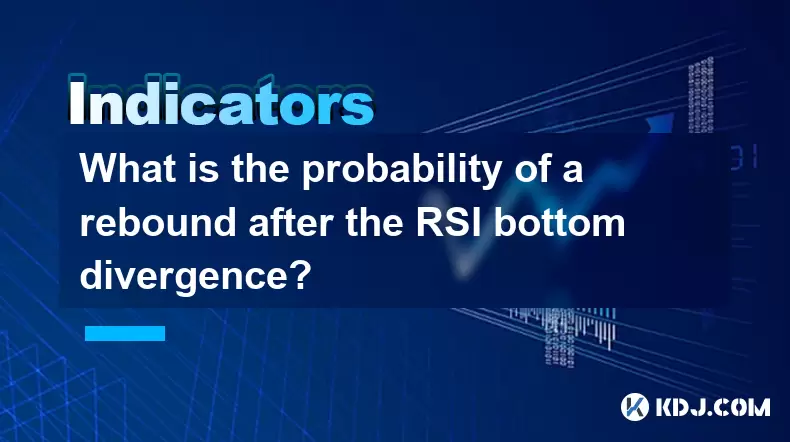
What is the probability of a rebound after the RSI bottom divergence?
Jun 16,2025 at 06:50pm
Understanding RSI Bottom Divergence in Cryptocurrency TradingThe Relative Strength Index (RSI) is a widely used momentum oscillator in technical analysis, particularly within the cryptocurrency market. It helps traders identify overbought or oversold conditions and potential reversal points. A bottom divergence occurs when the price of an asset makes a ...
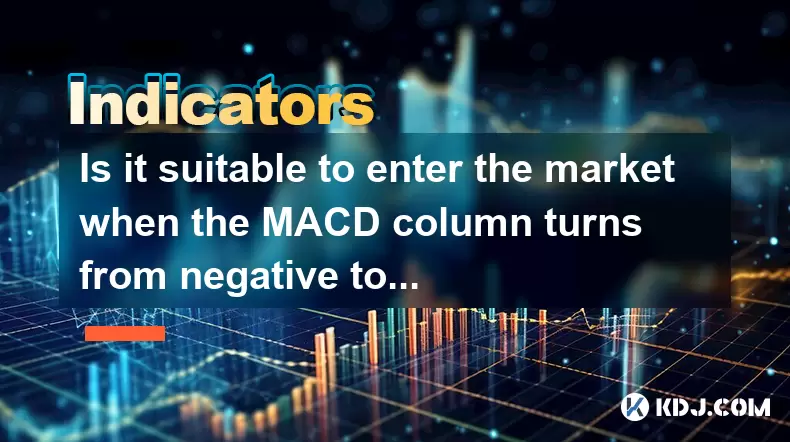
Is it suitable to enter the market when the MACD column turns from negative to positive?
Jun 16,2025 at 06:07pm
Understanding the MACD IndicatorThe Moving Average Convergence Divergence (MACD) is a widely used technical analysis tool in cryptocurrency trading. It consists of three main components: the MACD line, the signal line, and the MACD histogram (often referred to as the MACD column). The MACD line is calculated by subtracting the 26-period Exponential Movi...
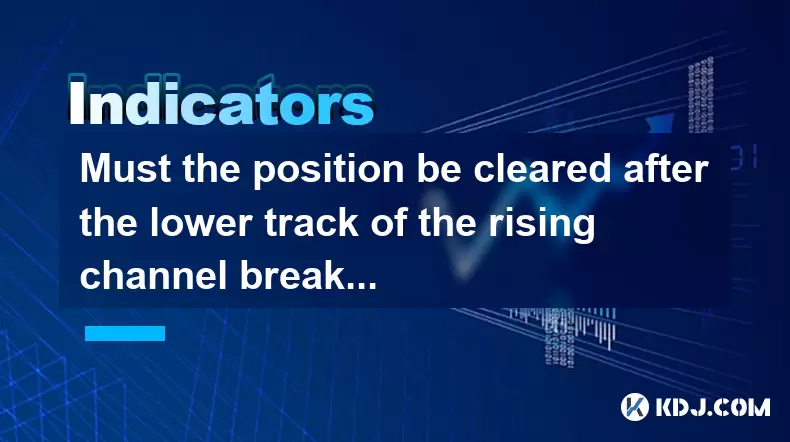
Must the position be cleared after the lower track of the rising channel breaks?
Jun 16,2025 at 04:43pm
Understanding the Rising Channel BreakdownIn technical analysis, a rising channel is formed by drawing two parallel trendlines: one connecting higher lows and another connecting higher highs. When the price breaks below the lower trendline of this channel, it signals a potential reversal or at least a pause in the uptrend. This event often triggers trad...

How to set the stop profit point after the high-level propeller pattern?
Jun 16,2025 at 08:04pm
Understanding the High-Level Propeller PatternThe high-level propeller pattern is a technical analysis formation often observed in cryptocurrency trading charts. It typically appears at significant price peaks and signals potential reversals. The pattern consists of a large candlestick with long upper and lower shadows, resembling a propeller, indicatin...

Is EMA12 crossing EMA26 a sign of a mid-line short position?
Jun 16,2025 at 07:22pm
Understanding EMA12 and EMA26 in Cryptocurrency TradingIn the world of cryptocurrency trading, Exponential Moving Averages (EMAs) are widely used tools for analyzing price trends. Specifically, the EMA12 and EMA26 are two of the most commonly referenced EMAs among traders. The EMA12 represents a short-term moving average calculated over the past 12 time...

What does the secondary enlargement of the MACD red column indicate?
Jun 16,2025 at 07:49pm
Understanding the MACD Indicator and Its ComponentsThe Moving Average Convergence Divergence (MACD) is a widely used technical analysis tool in cryptocurrency trading. It consists of three main components: the MACD line, the signal line, and the MACD histogram. The histogram, represented as red or green bars, reflects the difference between the MACD lin...

What is the probability of a rebound after the RSI bottom divergence?
Jun 16,2025 at 06:50pm
Understanding RSI Bottom Divergence in Cryptocurrency TradingThe Relative Strength Index (RSI) is a widely used momentum oscillator in technical analysis, particularly within the cryptocurrency market. It helps traders identify overbought or oversold conditions and potential reversal points. A bottom divergence occurs when the price of an asset makes a ...

Is it suitable to enter the market when the MACD column turns from negative to positive?
Jun 16,2025 at 06:07pm
Understanding the MACD IndicatorThe Moving Average Convergence Divergence (MACD) is a widely used technical analysis tool in cryptocurrency trading. It consists of three main components: the MACD line, the signal line, and the MACD histogram (often referred to as the MACD column). The MACD line is calculated by subtracting the 26-period Exponential Movi...

Must the position be cleared after the lower track of the rising channel breaks?
Jun 16,2025 at 04:43pm
Understanding the Rising Channel BreakdownIn technical analysis, a rising channel is formed by drawing two parallel trendlines: one connecting higher lows and another connecting higher highs. When the price breaks below the lower trendline of this channel, it signals a potential reversal or at least a pause in the uptrend. This event often triggers trad...
See all articles

























































































